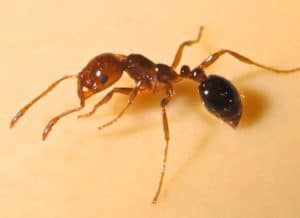
The Carrier Stallion’s Role in Disease Transmission
Asymptomatic carrier stallions maintain infectious agents in the breeding population from one season to the next.

Asymptomatic carrier stallions maintain infectious agents in the breeding population from one season to the next.

“Genomics” covers all aspects of genes, including structure and function. Here’s what equine researchers are learning.

The gradual north- and westward expansion of the fire ant’s range is exposing more horse owners to this important pest.
Reported diseases include African horse sickness, herpesvirus, influenza, strangles, and equine infectious anemia.

Cleaning and disinfecting stalls is critically important for biosecurity, especially in controlling disease outbreaks.

Once an animal is affected, the disease is invariably fatal. However, rabies prevention is easy. Here’s what to know.

A pathologist shares his thoughts on evolving microbes and how researchers are working to control associated disease.

Congenital cardiovascular malformations are rare in horses but can have serious implications.

Veterinarians can use progesterone diagnostically to evaluate luteal function during early pregnancy.

A recently discovered resistance gene in bacteria has focused attention on emerging multidrug resistance.

Many diseases were once considered geographically restricted. But disease migration has eliminated that complacency.
Diagnosed diseases include vesicular stomatitis, EHV, strangles, influenza, piroplasmosis, rabies, and more.

Find out how data can help improve horse owners’ knowledge of equine disease risks in their area.

These viruses are known for causing respiratory, reproductive, and neurologic issues, but can also impact horses’ eyes.
Confirmed diseases include vesicular stomatitis, EHV, influenza, Hendra virus, equine infectious anemia, and more.

Eastern equine encephalitis, or EEE, can be deadly in up to 90% of equine cases. Here’s what you should know.
Stay on top of the most recent Horse Health news with